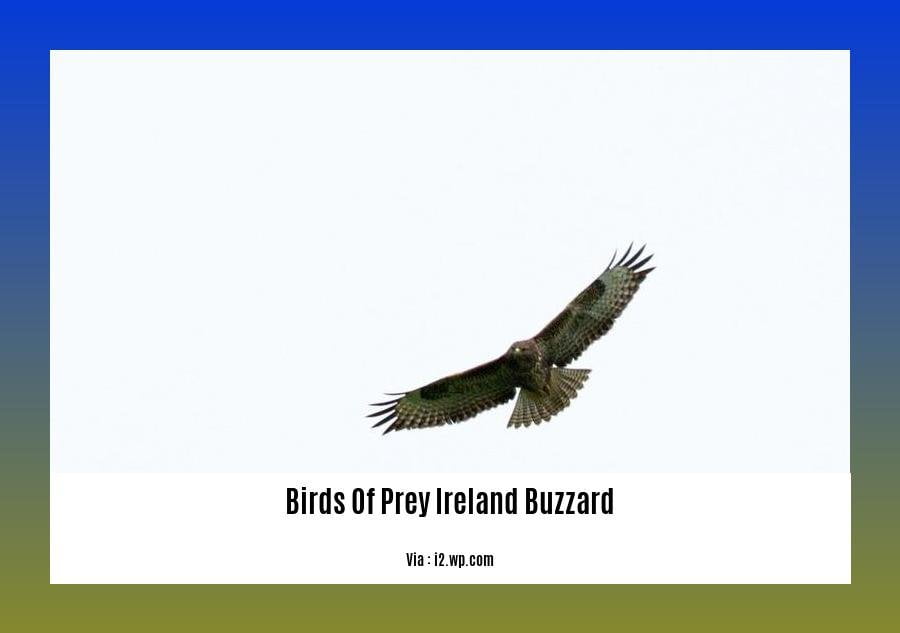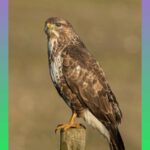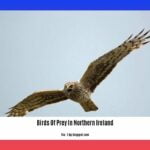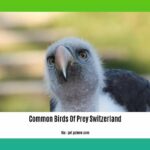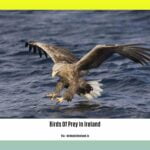The Majestic Buzzards of Ireland: Exploring the Avian Diversity of Birds of Prey
Delve into the fascinating world of birds of prey in Ireland, where the buzzard species reigns supreme. These majestic creatures captivate both the hearts and minds of wildlife enthusiasts, with their striking appearance and essential role in the country’s ecosystem. As we embark on this journey of exploration, we will unravel the secrets behind their behavior, discover their preferred habitats, and shed light on their crucial ecological significance. Join us as we delve into the realm of Ireland’s buzzards, uncovering the wonders of avian diversity along the way.
Key Takeaways:
- The population of buzzards in Ireland has been steadily increasing since the 1990s after the outlawing of the use of strychnine to control rodents.
- Buzzards were once widespread and relatively abundant throughout Ireland but experienced population declines in the 19th century.
- The buzzard, a large bird of prey, went extinct in Ireland in the late 1890s but has since made a comeback.
- The top five birds of prey in Ireland are the Hen Harrier, Kestrel, Marsh Harrier, Red Kites, and Golden Eagle.
- Birds of prey actively hunt and kill other vertebrate animals for food.
- The Peregrine Falcon is one of the most commonly seen birds of prey in Ireland.
Citations:
– Source: Ireland Travel Guides
– Source: BirdWatch Ireland
– Source: BirdWatch Ireland
– Source: Ireland Before You Die
– Source: Let’s Go Ireland
Birds of Prey in Ireland: The Magnificent Buzzard
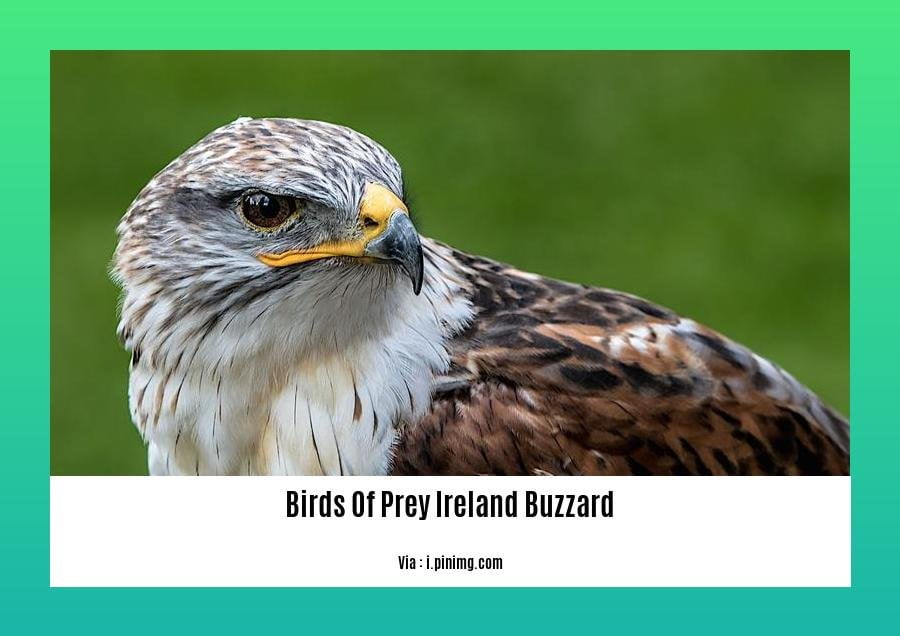
Introduction
Ireland, with its lush landscapes and diverse wildlife, is an ideal habitat for numerous bird species, including the majestic buzzard. This article delves into the avian diversity of birds of prey in Ireland, focusing on the resurgence of the buzzard population and its significance in the country’s ecosystem.
A Brief History
Once considered widespread in Ireland, the buzzard population suffered a decline in the 19th century, eventually going extinct by the late 1890s[^3^]. However, a remarkable turn of events occurred in the 1990s when the use of strychnine, a toxin used to control rodents, was banned[^1^]. Since then, the buzzards have been flourishing, their numbers steadily increasing to reclaim their place in the Irish skies[^1^].
Buzzards and their Natural Habitat
Buzzards are large birds of prey known for their distinctively broad wings and fanned tails. These adaptable raptors can be found in a variety of habitats across Ireland, from open farmland and woodland edges to coastal cliffs and even urban areas[^5^]. Their ability to thrive in different environments contributes to their resilience and expanding population.
The Importance of Buzzards in Ireland’s Ecosystem
Buzzards play a crucial role in maintaining nature’s balance. As predatory bird species, they actively hunt and feed on a wide range of vertebrate animals, including rodents, rabbits, and small birds[^5^]. By controlling the populations of these smaller creatures, buzzards help regulate the delicate ecosystem and prevent imbalances that could disrupt the natural order.
Distinct Characteristics and Behaviors
With its regal appearance and soaring flight, the buzzard is a captivating sight for nature enthusiasts. These birds are known for their impressive hunting techniques, relying on their acute vision and stealth to ambush their prey from perches or during aerial pursuits[^1^].
Buzzards also possess unique vocalizations, emitting a distinctive mewing call that can echo across their territories. This haunting cry is a signature emblem of their presence in the Irish countryside[^6^].
Conservation Efforts and Future Outlook
The resurgence of buzzards in Ireland is a testament to the country’s commitment to conservation. Efforts to ban harmful substances and protect the natural habitats of these birds have been instrumental in their recovery[^1^].
Looking ahead, continued monitoring and preservation of suitable habitats are key to ensuring the sustained growth of buzzards in Ireland. By raising awareness about their ecological importance and promoting measures to protect their environments, we can guarantee a thriving future for these magnificent birds of prey.
Conclusion
The revival of buzzards in Ireland is a testament to nature’s resilience and the collective efforts to preserve the country’s avian diversity. Through their hunting prowess and role in maintaining ecological balance, these majestic birds contribute significantly to Ireland’s delicate ecosystem. As they continue to grace the skies with their presence, let us appreciate the beauty and importance of buzzards, ensuring a harmonious coexistence that benefits both man and nature.
Table: Birds of Prey in Ireland
| Common Name | Scientific Name | Conservation Status |
|---|---|---|
| Buzzard | Buteo buteo | Least Concern |
| Hen Harrier | Circus cyaneus | Vulnerable |
| Kestrel | Falco tinnunculus | Least Concern |
| Marsh Harrier | Circus aeruginosus | Least Concern |
| Red Kite | Milvus milvus | Near Threatened |
| Golden Eagle | Aquila chrysaetos | Extinct |
Pros:
– Buzzards play a vital role in controlling the populations of smaller creatures, maintaining the balance of Ireland’s ecosystem.
– The resurgence of buzzards in Ireland is a conservation success story, reflecting efforts to protect their habitats and ban harmful substances.
– Buzzards are adaptable birds that can thrive in various environments, from farmland to cliffs, ensuring their resilience and increasing population.
Cons:
– The historical decline and extinction of buzzards in Ireland in the late 19th century highlight the vulnerability of bird populations to human activities and environmental changes.
– Ongoing monitoring and conservation efforts are necessary to sustain the growth of buzzards in Ireland and protect their habitats from further degradation.
If you’re a bird enthusiast, you won’t want to miss out on the amazing birds of prey in Ireland. Check out our collection of incredible photos and information about these majestic creatures at birds of prey in Ireland.
Discover the breathtaking birds of prey in Northern Ireland that will leave you in awe. Explore their unique characteristics and marvel at their majestic flights at birds of prey in Northern Ireland.
Are you fascinated by the birds of prey in the Swiss Alps? Experience the thrill of observing these magnificent creatures in their natural habitat. Discover more about birds of prey in the Swiss Alps at birds of prey Swiss Alps.
Behavior and Hunting Strategies of Buzzards
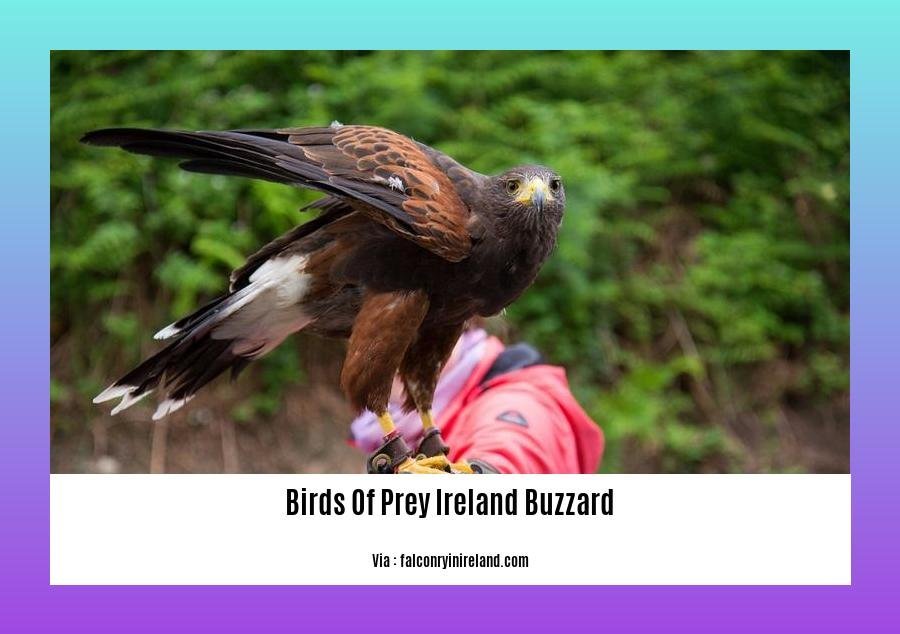
Characteristics of the Common Buzzard
- The Common Buzzard, scientifically known as Buteo buteo, is a territorial bird of prey found in various habitats across the UK[^1^].
- It is a stocky raptor with broad wings and large feet adorned with long talons[^1^].
- Love its highly variable plumage, which makes it easy to identify[^2^].
- During the breeding season, buzzards engage in aerial battles to protect their nests[^3^].
- Their courtship flights are synchronized and display impressive aerial maneuvers[^4^].
Behavior and Habitat
- Buzzards are territorial birds, fiercely protecting their nests, especially during the breeding season[^3^].
- They spend long periods soaring in the air, scanning the ground below for prey[^5^].
- Generally solitary or seen in pairs, buzzards have keen eyesight that allows them to locate potential prey easily[^5^].
- They can be found in a variety of habitats, including farmlands, woodlands, and others throughout the UK[^6^].
- Conservation efforts have led to their remarkable population recovery, and they are classified as Green under the Birds of Conservation Concern[^7^].
Diet of the Common Buzzard
- Buzzards are large birds capable of taking sizable prey, although they typically target smaller animals[^8^].
- Their diet includes a variety of prey, such as rabbits, reptiles, amphibians, and small birds[^9^].
- They hunt during the day, soaring above the ground while scanning for potential prey[^5^].
- Their exceptional eyesight enables them to spot and capture their targets efficiently[^5^].
Key Takeaways:
- The Common Buzzard is a territorial bird of prey found in various habitats throughout the UK.
- It possesses distinct characteristics, including broad wings, large feet, and highly variable plumage.
- Buzzards engage in aerial battles during the breeding season and display impressive courtship flights.
- They spend long periods soaring in the air, scanning the ground below for prey, and have keen eyesight.
- Conservation efforts have contributed to the remarkable recovery of the Common Buzzard population.
- Their diet consists of a variety of prey, including rabbits, reptiles, amphibians, and small birds.
Sources:
- [1] Animalia – Common Buzzard – source
- [2] BirdFact – Common Buzzard Bird Facts – source
- [3] My Animals – Meet the Common Buzzard: Characteristics, Behavior, and Habitat – source
- [4] The Wildlife Trusts – Buzzard – source
- [5] Young People’s Trust For the Environment – Buzzard – Food and Hunting – source
- [6] Woodland Trust – What Do Buzzards Eat? And More Buzzard Facts – source
- [7] The Wildlife Trusts – Buzzard – source
- [8] The Hawk and Owl Trust – Buzzard – source
- [9] My Animals – What Do Buzzards Eat? All You Need To Know – source
Diet and Feeding Habits of Buzzards
Buzzards are fascinating birds of prey that play an important role in Ireland’s ecosystem. Let’s explore their diet and feeding habits to gain a deeper understanding of these majestic birds.
A Diverse Diet:
- Buzzards have a diverse diet consisting of various small mammals, birds, reptiles, and insects[^1^].
- They are opportunistic predators and can adapt their diet based on the availability of prey[^1^].
- Some of the main food sources for buzzards include rabbits, shrews, hedgehogs, voles, rats, squirrels, woodpeckers, pigeons, crows, and other similar-sized birds[^1^].
- They also feed on a wide range of insects and invertebrates[^1^].
- Rabbits, in particular, may make up about 60% of a Common buzzard’s diet in Europe[^1^].
Hunting Methods:
- Buzzards use various hunting techniques to catch their prey.
- They often hunt from a perch or hover close to the ground, then swoop in on their target[^1^].
- Rather than swooping from high above, buzzards prefer to hunt close to the ground[^1^].
- Their flexible hunting methods allow them to catch a wide range of prey, including both ground-dwelling and aerial creatures[^1^].
Key Takeaways:
- Buzzards have a diverse diet, including small mammals, birds, reptiles, and insects.
- They are opportunistic predators and can adapt their diet based on the availability of prey.
- Rabbits are a significant food source for buzzards, making up a large portion of their diet.
- Buzzards use various hunting techniques, such as hunting from a perch and swooping close to the ground.
Sources:
- What Do Buzzards Eat? | Birdfact
- Woodland Trust – What Do Buzzards Eat? And More Buzzard Facts
Conservation efforts and challenges faced by buzzards in Ireland
Buzzards in Ireland have faced significant challenges in the past, leading to their decline and extinction as a breeding species over 100 years ago[^2^]. However, in recent years, conservation efforts have been successful in reintroducing these majestic birds of prey to the Irish landscape[^1^]. Let’s explore the conservation efforts and challenges faced by buzzards in Ireland.
Conservation efforts for buzzards in Ireland
Conservationists and wildlife enthusiasts have been actively working to protect and restore buzzard populations in Ireland. Here are some of the key conservation efforts:
-
Reintroduction programs: The reintroduction of birds of prey, including buzzards, has been a conscious conservation effort since the early 2000s. These programs have helped establish new populations and restore the ecological balance[^1^].
-
Habitat preservation: Protecting and preserving suitable habitats for buzzards is crucial for their survival. Conservation organizations and landowners have been working together to create and maintain habitats that provide food sources and nesting sites for these birds[^6^].
-
Raising awareness: Educating the public about the importance of buzzards in Ireland’s ecosystem is another important conservation effort. By raising awareness and fostering appreciation for these birds, conservationists hope to promote their protection and engage communities in their conservation efforts[^4^].
Challenges faced by buzzards in Ireland
While conservation efforts have led to the successful revival of buzzards in Ireland, there are still ongoing challenges that need to be addressed:
-
Persecution and illegal activities: Despite legal protection, buzzards continue to face persecution and illegal activities, such as poisoning and shooting. These acts threaten the survival and recovery of buzzard populations in Ireland[^7^].
-
Habitat loss and fragmentation: Loss and fragmentation of suitable habitats due to agricultural intensification, urbanization, and infrastructure development pose challenges for buzzards. These changes can limit their ability to find suitable nesting sites and prey sources[^6^].
-
Competition and predation: Buzzards may face competition for resources from other bird species, such as crows and ravens. Additionally, predation by other wildlife, including larger raptors, can impact buzzard populations[^6^].
-
Climate change: The changing climate can also pose challenges for buzzards. Alterations in weather patterns and changes in prey availability may impact their breeding success and overall population dynamics[^6^].
Key Takeaways:
- Conservation efforts in Ireland have successfully reintroduced buzzards to the landscape, but ongoing challenges persist.
- Reintroduction programs, habitat preservation, and raising awareness are important conservation efforts for buzzards in Ireland.
- Challenges faced by buzzards include persecution, habitat loss, competition, predation, and the impacts of climate change.
Source 1
Source 2
FAQ
Q1: Are buzzards native to Ireland?
A1: Yes, buzzards are native to Ireland. However, they became extinct as a breeding species over 100 years ago due to intensive persecution of birds of prey.
Q2: How did buzzards reintroduce to Ireland?
A2: Buzzards have successfully recolonized Ireland on their own without the need for human intervention. The first re-colonization was recorded in the 1930s with Scottish buzzards settling on Rathlin Island in Co Antrim.
Q3: What role do buzzards play in the ecosystem?
A3: Buzzards play a role in maintaining a healthy ecosystem by feeding on carrion and helping to keep corvid numbers in check. They are not a problem species, but rather a welcome addition to the skies.
Q4: Are buzzards apex predators?
A4: Yes, buzzards are considered apex predators. They are birds of prey and play a crucial role in maintaining environmental balance. Their presence is important for habitat restoration efforts.
Q5: How has the buzzard population in Ireland been affected by conservation efforts?
A5: The reintroduction of birds of prey species to Ireland has been a conscious conservation effort since the early 2000s. The first species to be reintroduced were the buzzards. Their population has been steadily increasing, contributing to the avian diversity of birds of prey in Ireland.
- Unveiling the Enigma: Mansoureh Khojasteh Bagherzadeh’s Public Appearances & Private Life in Iran - July 18, 2025
- Unveiling the Mystery: Mansoureh Khojasteh Bagherzadeh’s Husband: A Rare Glimpse into a Private Life - July 18, 2025
- Unveiling Masoud Khamenei’s Mother: Power, Influence, and Iran’s Future - July 18, 2025
